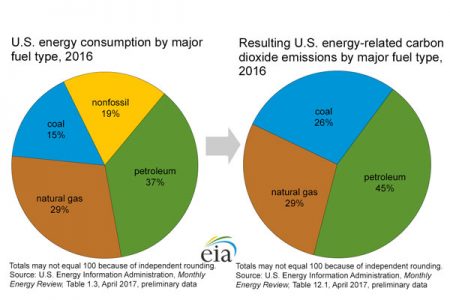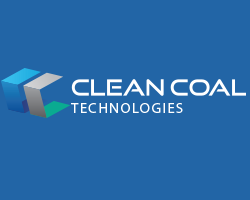September 10, 2017 – Just because a company calls itself Clean Coal, doesn’t mean it has a solution worth funding. Coal is the single largest human-created contributor of greenhouse gas emissions on the planet today. It is the expansion of coal-fired thermal power plants globally, along with the proliferation of automobiles with internal combustion engines, that has created the carbon dioxide (CO2) fix we are in.
Coal mining is on the decline except where governments continue to cling to notions that we humans have nothing to do with climate change. The United States and Australia come to mind. In these two jurisdictions, leadership has chosen to bury its head in the sand and use terms like “clean coal” as a justification for continuing to support the mining and burning of this fossil fuel.
One company in the “clean coal” business, New York City-based, Clean Coal Technologies, Inc., announced this week that a utility company, Wyoming New Energy, provided a deposit on a 2-million ton facility to be built in the state to create “clean coal” using a patented process called Pristine M. This follows current testing in a pilot plant in Tulsa, Oklahoma, where coal is being cleaned to make it more efficient, less polluting, and more cost-effective, while producing more heat than untreated coal.
The company claims it reduces 90% of the chemical pollutants in coal including sulfur and mercury. The technology extracts what it calls the volatiles from “lower ranking coals.” We assume by lower rank they mean non-anthracite forms of the mineral including lignite and brown coal common to Wyoming’s mines. Another product is Pristine-SA. It is described as in the development stage, and “designed to eliminate 100% of the volatile material in feed coal.” To do this the lignite or brown coal are mixed with biomass or natural gas when burned which then eliminates “the need for emissions scrubbers” and the production of toxic sludge after burning. So states the company on its website.
Nothing on the website provides technical information to confirm the claims of the company. And there is no data on the CO2 emitted when burning this “clean coal?”
How does the following statement from the company’s website jibe with your notion of what is meant by clean coal?
“Using relatively inexpensive coal and upgrading its BTU ranking often creates an arbitrage between the disproportionate market prices of lower ranking coals versus their higher ranking counterparts. The applications on most coals are very compelling, even bringing much higher value to stranded reserves, low ranking coals, lignite, and high moisture coals that might not be saleable in current world coal market conditions.”
So is this more about making dirty coal more appealing to the marketplace?
Or how about this statement from the company’s CEO which states,
“As a coal-industry technology pioneer, we’re committed to providing a final product that will burn more efficiently for our customers. Less coal burned and burning at a higher BTU results in fewer emissions and a smaller carbon footprint.”
This CEO talks about a smaller carbon footprint only in the context of making dirty coal more appealing for use in thermal power plants. His expertise is in energy markets and in his bio it emphasizes his strong “industry and political contacts.”
Supporting management includes a chairman with an MBA and PhD in finance and a director who is described as having infrastructure and sustainable development expertise based on 35 years of work in Southeast Asia where there are lots of coal-burning thermal power plants.
In 2016, coal represented 15% of the energy consumed by fuel type and contributed 26% of CO2 emissions in the U.S.
But in this dystopian world with “fake news” and a U.S. President who has no interest in CO2 emission reductions, you can designate a company to be “Clean Coal” even though there is nothing clean about what it produces or supports. Instead, we have a business dedicated to making dirty coal, sourced in Wyoming, marginally less polluting so it can be sold abroad or used by U.S. utilities with coal-fired power plants. In terms of CO2 emission reductions, Clean Coal Technologies Inc., does next to nothing.










